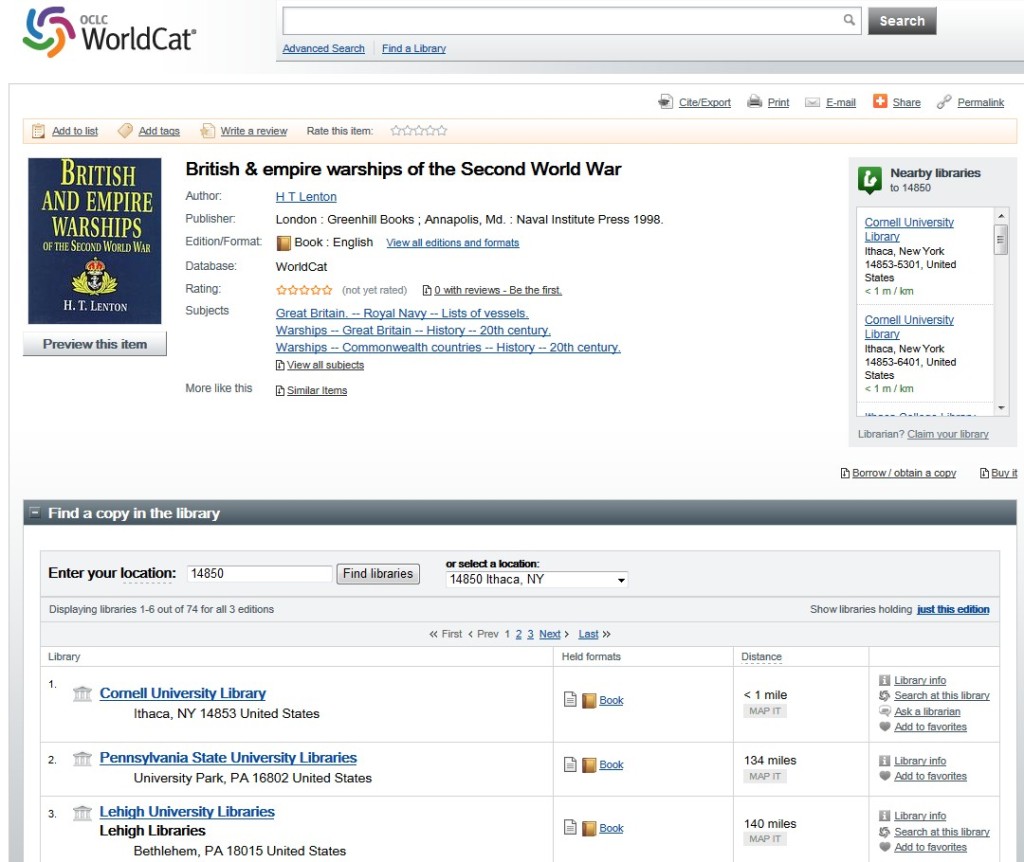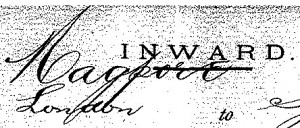It should be abundantly clear by now that we have a crack team working away on data; we’ve added indexes from hundreds of new titles to the database over the past year. It’s just not stopping, either. The indexes to the following books (and one online resource) have been added to ShipIndex.org since my last listing of content, on December 31:
- Papers Relating to the Navy During the Spanish War 1585-1587 (Navy Records Society, Vol. 11). London: Navy Records Society, 1898.
- Recollections of James Anthony Gardner: Commander R.N. (1775-1814) (Navy Records Society, Vol. 31). London: Navy Records Society, 1906.
- The Old Scots Navy from 1689 to 1710 (Navy Records Society, Vol. 44). London: Navy Records Society, 1914.
- Nelson and the Neapolitan Jacobins: Documents Relating to the Suppression of the Jacobin Revolution at Naples, June 1799 (Navy Records Society, Vol. 25). London: Navy Records Society, 1903.
- Fish Tugs of the Greatest Lake: Bayfield, Wisconsin. (Our first web resource added in quite a while!)
- The Journal of Rear-Admiral Bartholomew James, 1752-1828 (Navy Records Society, Vol. 6). London: Navy Records Society, 1896.
- Dispatches and Letters Relating to the Blockade of Brest, 1803-1805, Volume 2 (Navy Records Society, Vol. 21). London: Navy Records Society, 1902.
- Documents Relating to Law and Custom of the Sea, Vol. II: A.D. 1649-1767 (Navy Records Society, Vol. 50). London: Navy Records Society, 1916.
- Cruise Books of the United States Navy in World War II : a Bibliography. Washington DC: Naval Historical Center, 1993.
- The Sinking of HMAS Sydney : How Australia’s Greatest Maritime Mystery was Solved. Sydney, NSW: HarperCollins Australia Pty Limited, 2018.
- Early American Ships. Williamsburg, VA: Thirteen Colonies Press, 1986.
- Canada’s Navy: the First Century (Second Edition). Toronto: University of Toronto Press, 2010.
- Sailing Ship to Supertanker: the Hundred-Year Story of British Esso and its Ships. Lavenham, Suffolk: Lavenham: Terence Dalton, 1987.
- The American President Lines and its Forebears, 1848-1984: From Paddlewheelers to Containerships. Newark: University of Delaware Press, 1987.
- Whaleback Ships and the American Steel Barge Company. Detroit: Wayne State University Press, 2018.
- The Autobiography of Phineas Pett (Navy Records Society, Vol. 51). London: Navy Records Society, 1918.
- The Kriegsmarine: Facts, Figures and Data for the German Navy, 1935-45. London: Amber Books, 2018.
- China’s Struggle for Naval Development 1839-1895. Cambridge: Harvard University Press, 1967.
- Fighting Fleets. New York: Dood, Mead, & Company, 1943.
- The Naval Miscellany, Vol. 8 (Navy Records Society, Vol. 164). London: Routledge for the Navy Records Society, 2017.
- Pearl Harbor: Why, How, Fleet Salvage and Final Appraisal. Washington DC: Naval History Division, 1968.
- Fighting Ships. Garden City, NY: Doubleday & Company, Inc., 1967.
- The Struggle for Sea Power: a Naval History of the American Revolution. New York: W.W. Norton & Company, 2016.
As always, we welcome suggestions for new content to add, and we’d love to work with publishers who want to ensure that their content is discoverable! Send a note to comments (at) shipindex (dot) org to see how we can work together on this.










